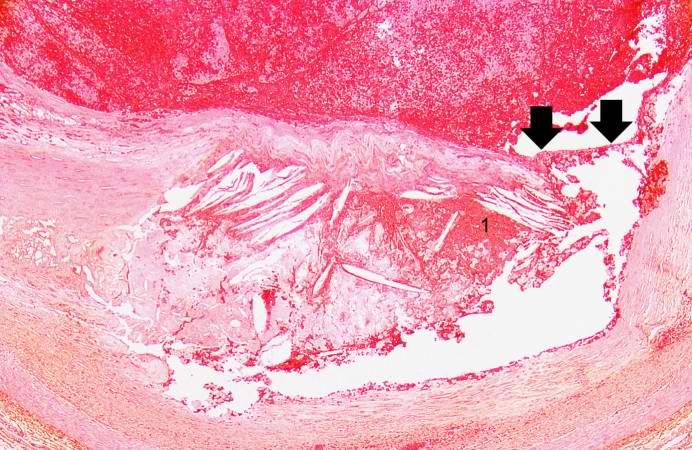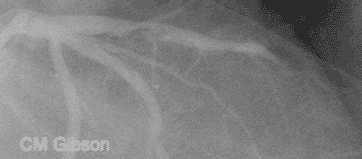Non ST elevation myocardial infarction pathophysiology
| Resident Survival Guide |
|
Unstable angina / NSTEMI Microchapters |
|
Differentiating Unstable Angina/Non-ST Elevation Myocardial Infarction from other Disorders |
|
Special Groups |
|
Diagnosis |
|
Laboratory Findings |
|
Treatment |
|
Antitplatelet Therapy |
|
Additional Management Considerations for Antiplatelet and Anticoagulant Therapy |
|
Risk Stratification Before Discharge for Patients With an Ischemia-Guided Strategy of NSTE-ACS |
|
Mechanical Reperfusion |
|
Discharge Care |
|
Case Studies |
|
Non ST elevation myocardial infarction pathophysiology On the Web |
|
FDA on Non ST elevation myocardial infarction pathophysiology |
|
CDC onNon ST elevation myocardial infarction pathophysiology |
|
Non ST elevation myocardial infarction pathophysiology in the news |
|
Blogs on Non ST elevation myocardial infarction pathophysiology |
|
to Hospitals Treating Non ST elevation myocardial infarction pathophysiology |
|
Risk calculators and risk factors for Non ST elevation myocardial infarction pathophysiology |
Editor-In-Chief: C. Michael Gibson, M.S., M.D. [1]; Associate Editors-In-Chief: Varun Kumar, M.B.B.S.; Lakshmi Gopalakrishnan, M.B.B.S.
Overview
Unstable angina and NSTEMI are at different ends of the spectrum of the same disease. While there is no way to determine which patients presenting with unstable angina will ultimately progress to NSTEMI, the distinction between the two entities is clear. Often, for patients presenting prior to the four hour window before cardiac biomarkers are positive (namely CK-MB), the EKG in context of the patient's chest pain will be marker for whether patient has STEMI versus UA/NSTEMI and needs to urgently undergo percutaneous revascularization.
Pathophysiology
Complete List of (Known) Underlying Mechanisms of NSTEMI
- Inflammation
- Irregularity of leukocytes or platelets
- Plaque disruption or plaque erosion
- Thrombosis
Plaque Rupture, Thrombus Formation, and Embolization Underly the Pathophysiology of NSTEMI
- This video shows plaque rupture or disruption of the atherosclerotic plaque in the mid left anterior descending artery (LAD) .
- As is often the case, the plaque has torn at its edge, a location where the fibrous cap covering the atherosclerotic plaque is the thinnest.
- Clot has formed and it is embolizing downstream.
- The most common preceding pathophysiologic event in NSTEMI is the disruption of an atherosclerotic plaque in an epicardial coronary artery, as shown here.
- Exposure of the atherosclerotic plaque contents to the blood stream leads to activation of the clotting cascade, local thrombus formation, and incomplete occlusion of the epicardial artery in NSTEMI.
- This artery is open, in NSTEMI unlike STEMI where the artery is closed.
- The downstream microvasculature is occluded by the clot that has embolized, and this accounts for the troponin elevation in this patient.
Original Hypothesis
- As opposed to the original hypothesis that acute coronary syndrome (ACS) is caused by gradual progression of coronary atherosclerosis to the point of a severe, fixed lesion, it has become clear that, in fact, ACS is usually caused by atherosclerotic plaque rupture at a site that previously had only mild to moderate stenosis.[1]
- This plaque rupture exposes ligands (including collagen) for platelet adhesion which causes platelet aggregation and subsequent platelet activation.[2]
- Platelets are activated by thrombin (found in blood clots), adenosine diphosphate (found in platelet granules), serotonin (also found in platelet granules), and thromboxane-A2.[2]
- Upon activation, the glycoprotein IIb/IIIa receptor, that in a non-active state is found in the cytosol, is exteriorized and modified which enables additional platelet aggregation and cross-linking.[1]
- The prothrombinase complex then binds to the activated platelet and starts the coagulation cascade.[1]
- This entire process results in a thrombus which coalesces over the ruptured plaque.
Below is the animation showing clot formation which breaks off to embolize artery downstream:
{{#ev:youtube|T_t-0cAP1C4}}
Other Mechanisms
Although less common, ACS may also occur by other mechanisms. These include:
- Coronary artery spasm as in Prinzmetal's angina,
- Severe narrowing alone without plaque rupture, as in the case of restenosis after percutaneous coronary intervention (PCI) or as with progressive atherosclerosis,
- Coronary artery dissection,
- Secondary ischemia in cases in which there is either increased myocardial oxygen demand as in tachycardia from fever, anemia, hypoxemia, thyrotoxicosis, or in cases of decreased supply such as in hypotension or anemia from hemorrhage.
Genetics
- To date, there does not appear to be any single genetic marker predictive of acute coronary syndrome (ACS).[3]
- In a recent validation study of genetic variants associated with (which includes STEMI, NSTEMI, and UA) none of the 85 genetic variants tested were shown to be correlated with ACS. The study chose the polymorphic genetic variants based on statistically significant findings of prior studies.[4]
- Nonetheless, although no individual marker is likely to be predictive, in the future it is possible that a panel of markers may be used to assess risk.[3][5]
Microscopic Pathology

References
- ↑ 1.0 1.1 1.2 Martinez-Rumayor A, Januzzi JL (2006). "Non-ST segment elevation acute coronary syndromes: A comprehensive review". Southern Medical Journal. 99 (10): 1103–10. PMID 17100031. Retrieved 2011-04-11. Unknown parameter
|month=ignored (help) - ↑ 2.0 2.1 Patrono C, Renda G (1997). "Platelet activation and inhibition in unstable coronary syndromes". The American Journal of Cardiology. 80 (5A): 17E–20E. PMID 9296464. Unknown parameter
|month=ignored (help);|access-date=requires|url=(help) - ↑ 3.0 3.1 Anwaruddin S, Askari AT, Topol EJ (2007). "Redefining risk in acute coronary syndromes using molecular medicine". Journal of the American College of Cardiology. 49 (3): 279–89. doi:10.1016/j.jacc.2006.08.051. PMID 17239708. Retrieved 2011-04-11. Unknown parameter
|month=ignored (help) - ↑ Morgan TM, Krumholz HM, Lifton RP, Spertus JA (2007). "Nonvalidation of reported genetic risk factors for acute coronary syndrome in a large-scale replication study". JAMA : the Journal of the American Medical Association. 297 (14): 1551–61. doi:10.1001/jama.297.14.1551. PMID 17426274. Retrieved 2011-04-11. Unknown parameter
|month=ignored (help) - ↑ Wilcken DE (2003). "Overview of inherited metabolic disorders causing cardiovascular disease" (PDF). Journal of Inherited Metabolic Disease. 26 (2–3): 245–57. PMID 12889664. Retrieved 2011-04-11.
